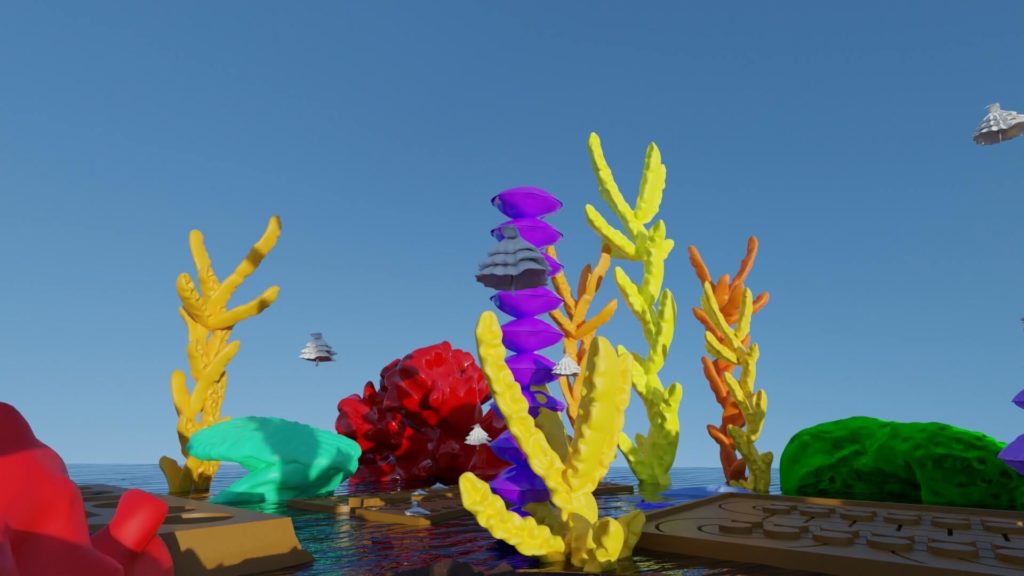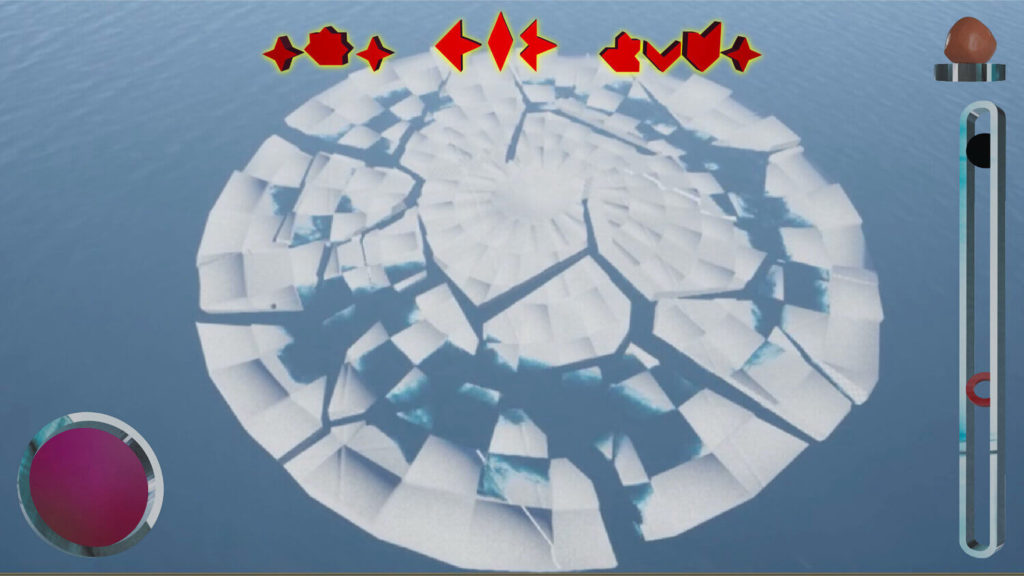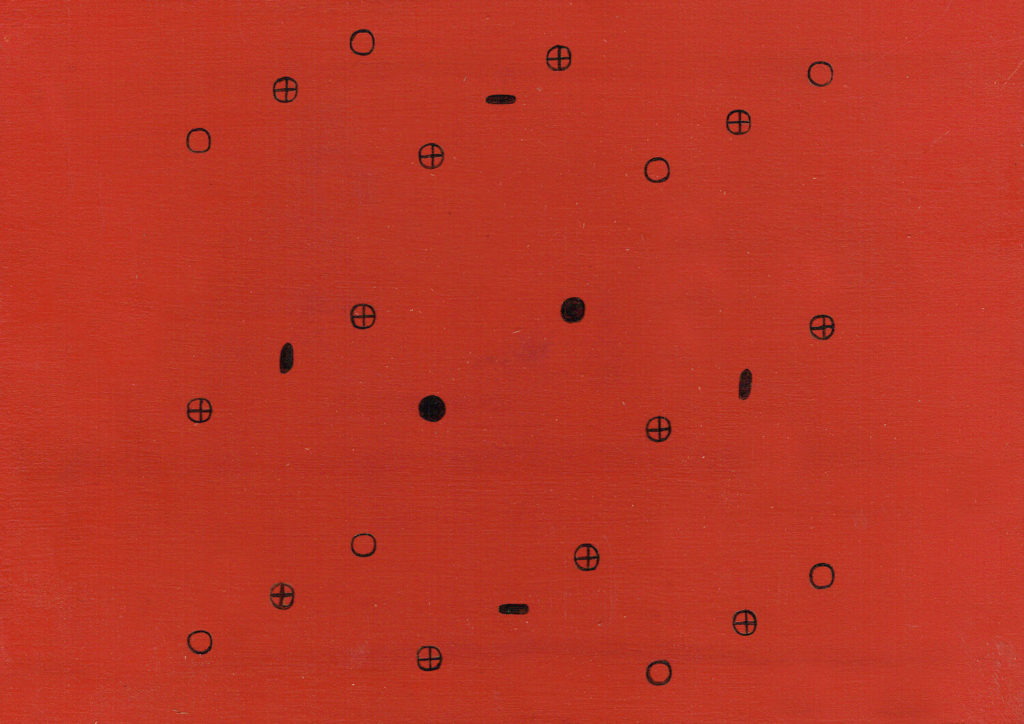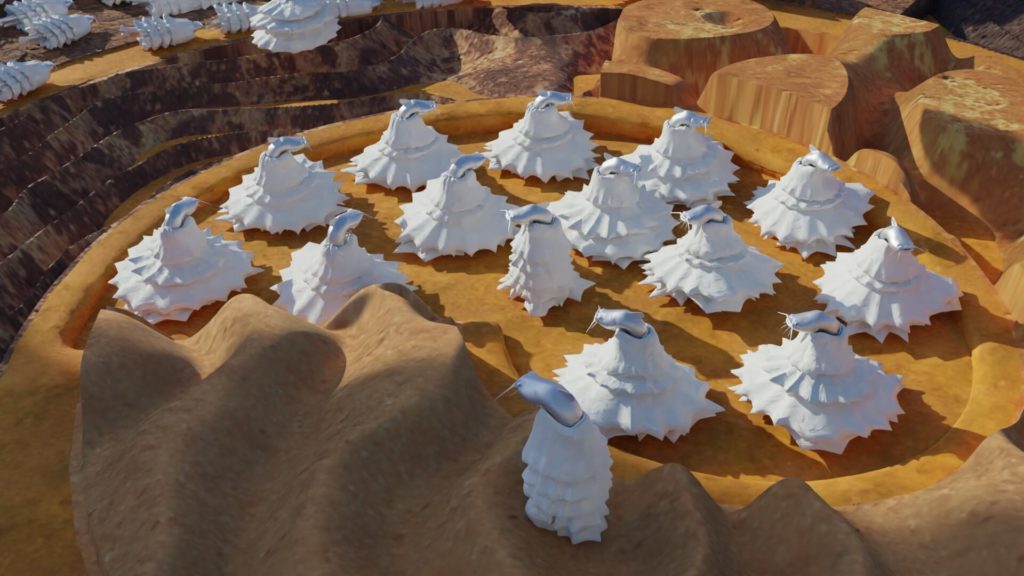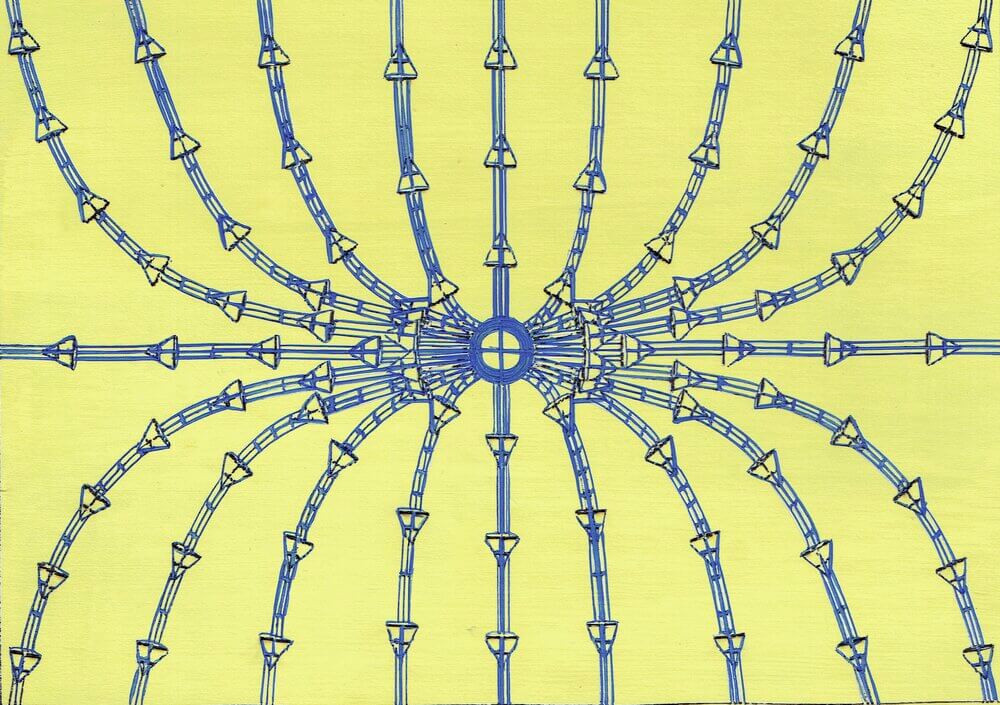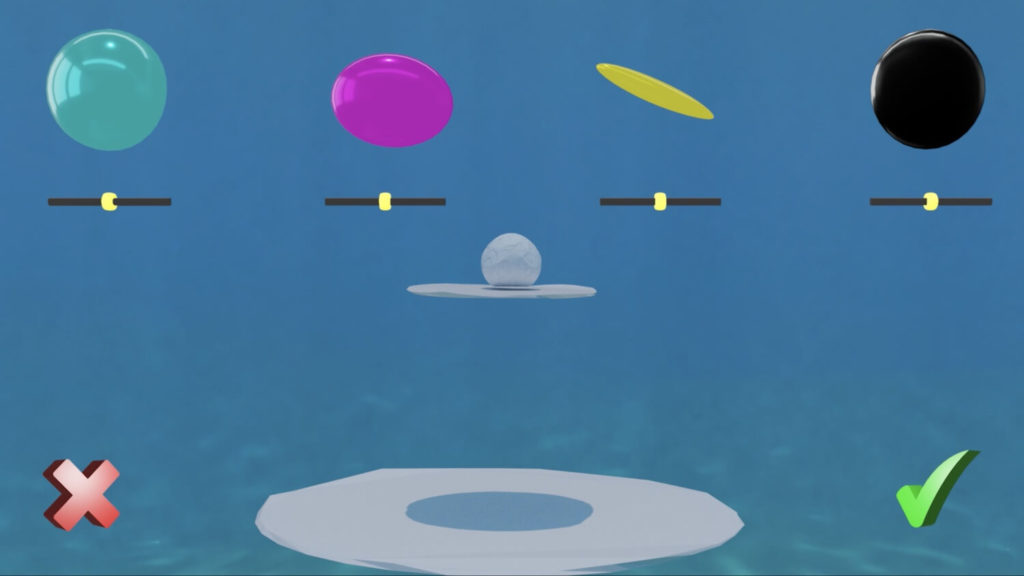Through game engine and world-building as a literary tool, Felemban creates a fictional world, the essence of which is an impossible geometric shape called Gömböc; the first known homogenous object with one stable and one unstable equilibrium point. Its existence was conjectured by the Russian mathematician Vladimir Arnold in 1995 and proven in 2006 by the Hungarian scientists Gábor Domokos and Péter Várkonyi.
In a world where unity is not the underlying order in everything, but rather duality and extreme paradoxes, a mythical creature called Jirry, Garmoot, Salloor, or Jama’ah, lives to maintain the order of the board game-based reality. To acclimate to its environment (The Sea of Boards) and survive it, the creature develops deep knowledge in calculating data and probabilities, game strategy, and problem-solving.
Living in enclaves and communities, they are synchronized: their home is not a place but a continuous stream of collaborative practices — playing, singing, and simply being together. Living in a flat world, in the middle of the Red Sea, the Jirry follows the Zingg diagram, which was introduced in 1935 to help geologists classify the overall shape of sedimentary particles like pebbles crystals. According to this classification system, four forms are defined and mixable: bladed, oblate, equant, and prolate.
Diagrams of the elements help them understand the system in which they exist as higher creatures, and they use them to collect data that helps them navigate their migration. Felemban, alongside a team of a 3D artist Iyas Dehathim and Game Developer Hussam Dehathim, worked on creating a physics simulation game visually inspired by Czech surrealist artist Jan Švankmajer, and the 1998 Egyptian animation series Tales of Prophets claymation. The game serves as both a map and a journey. Where the player can help create input data for the Jirri Tribe by trying different variables of atom cells, and test their survival chances during extreme changes or disasters.
Such reflexivity blurs the distinction made by French sociologist Roger Caillois in 1958: “play is essentially a separate occupation, carefully isolated from the rest of life, and generally is engaged with precise limits of time and place.” If play has some restrictions here, it’s an imaginary alternative to the foundation of civilization.
